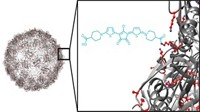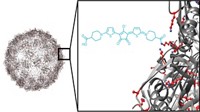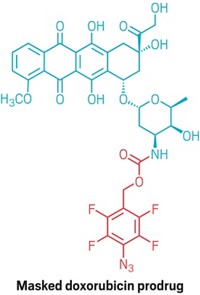Advertisement
Grab your lab coat. Let's get started
Welcome!
Welcome!
Create an account below to get 6 C&EN articles per month, receive newsletters and more - all free.
It seems this is your first time logging in online. Please enter the following information to continue.
As an ACS member you automatically get access to this site. All we need is few more details to create your reading experience.
Not you? Sign in with a different account.
Not you? Sign in with a different account.
ERROR 1
ERROR 1
ERROR 2
ERROR 2
ERROR 2
ERROR 2
ERROR 2
Password and Confirm password must match.
If you have an ACS member number, please enter it here so we can link this account to your membership. (optional)
ERROR 2
ACS values your privacy. By submitting your information, you are gaining access to C&EN and subscribing to our weekly newsletter. We use the information you provide to make your reading experience better, and we will never sell your data to third party members.
Pharmaceuticals
Nanoparticle Takes Photodynamic Therapy To Deep Tumors
Biomedicine: A new nanoparticle makes it possible to target cancer cells deep in the body with low doses of X-rays
by Katherine Bourzac
March 20, 2015

A multifunctional nanoparticle could make it possible to use a cancer treatment called photodynamic therapy (PDT) to destroy tumors deep inside the body. Researchers designed the nanoparticle to absorb low doses of deeply penetrating X-rays which then set off a cascade of effects that killed cancer cells when tested in mice (Nano Lett. 2015, DOI: 10.1021/nl504044p).
Conventional cancer therapies such as chemotherapy and radiation can damage healthy tissue along with tumor cells, causing painful side effects. But PDT offers a way to target treatments to diseased cells. Doctors first inject a photosensitizer molecule into a patient’s bloodstream or apply it to the skin. Then, shining light of a particular wavelength onto tumors activates the molecules, which transfer their energy to nearby oxygen molecules to generate reactive oxygen species that kill cells nearby.
But existing PDT photosensitizers work with near-infrared or visible light, which can travel only a few millimeters through tissue before it’s absorbed or scattered. So PDT has only worked for tumors on the skin or near the surface of the body.
To penetrate deeper into tissues, researchers would like to create PDT agents that work with X-rays. Last year, researchers reported a nanoparticle that could be activated by X-rays, but at a dose of 5 grays (Gy), which is comparable with or higher than the typical fractional doses used for conventional radiation therapy (J. Biomed. Nanotechnol. 2014, DOI: 10.1166/jbn.2014.1954).
Jin Xie, a chemist at the University of Georgia, wanted to design a more sensitive and clinically relevant PDT agent that would be activated by lower X-ray doses. The team started with a core of europium-doped strontium aluminate (SAO), which absorbs X-ray radiation and reemits it at longer, visible wavelengths. SAO readily hydrolyzes in water, so he and his colleagues first coated the nanoparticles with a thin shell of solid silica and then with a crust of mesoporous silica. The silica pores are loaded with a merocyanine dye that absorbs 540-nm-wavelength light emitted from SAO and then triggers the production of reactive oxygen species.
The researchers next tested the nanoparticles in mice implanted with glioblastoma tumors. They injected the nanoparticles directly into tumors and then irradiated the sites with a single X-ray dose of 0.5 Gy. The researchers saw the tumors shrink to 60% of their original size after 12 days, and on the 16th day, some of the tumors were imperceptible. Tumors in animals that did not get the combination of nanoparticles and X-rays grew rapidly. Tumors also grew in the mice treated with this low X-ray dose alone, which means the therapeutic effect was not attributable to the initial radiation. The nanoparticles also showed no toxic effects in the mice.
“This is an interesting proof of principle that could be of high clinical significance,” says Weibo Cai, director of the Molecular Imaging & Nanotechnology Lab at the University of Wisconsin School of Medicine & Public Health. Now that the Georgia group has demonstrated that the nanoparticles can be used for PDT, they’ll have to tailor them for clinical use, he says. The first step will be to make a formulation that can be injected into the bloodstream rather than directly into the tumor. Xie says his lab is currently working on nanoparticle designs that use antibodies to target tumors and that could be given intravenously.





Join the conversation
Contact the reporter
Submit a Letter to the Editor for publication
Engage with us on Twitter